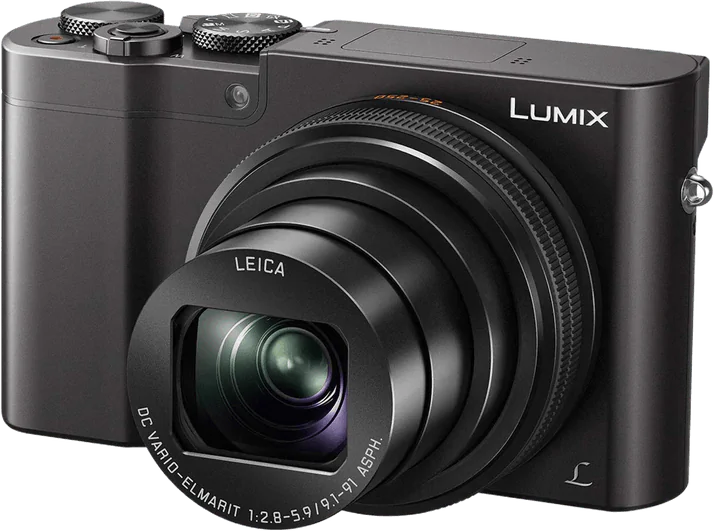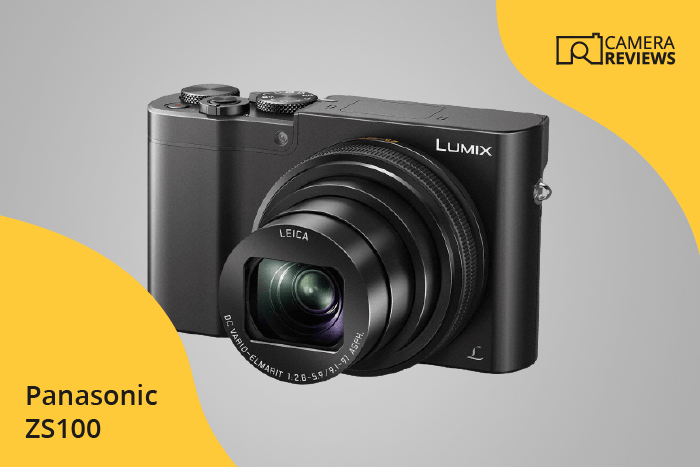Panasonic Lumix DMC ZS100 Specs and Scores

The Panasonic Lumix DMC ZS100 receives a score of 58/100 in our review. This compact camera, announced on January 5, 2016, and released the same year, entered the market with a launch price of $699. Measuring 111 x 65 x 44mm and weighing 312g (0.69lbs), the ZS100 has decent specifications for a camera of its age.
Considering the current market, the ZS100’s specifications still hold up well, especially for those seeking a lightweight and portable camera. This makes it a viable option for casual photographers and travelers.
Panasonic Lumix DMC ZS100 Overview and Optics
The Panasonic Lumix DMC ZS100 receives a 61/100 score for its optics, which reflects its capabilities in today’s market. This camera boasts 20 megapixels, a 10 fps shooting speed, and a CMOS sensor, all powered by the Venus Engine processor. With a DXOMARK score of 71 for the sensor, it provides good image quality within its 1″ sensor size.
As for the lens, the ZS100 has a fixed lens mount, meaning the lens cannot be changed. However, it does feature image stabilization, which helps to reduce blur in photos, and a 3:2 aspect ratio for versatile framing options.
Taking all of these specifications into account, the Panasonic Lumix DMC ZS100 offers decent optics for its price range. While it may not be the best option for professional photographers, it is a reliable choice for casual users and hobbyists who seek a simple and easy-to-use camera.
Panasonic Lumix DMC ZS100 Video Performance
The Panasonic Lumix DMC ZS100 receives a video score of 69 out of 100. This camera offers a maximum video resolution of 4K, with dimensions of 3840 x 2160. It is capable of capturing footage at a frame rate of up to 60fps. However, it lacks a built-in time-lapse functionality.
In today’s market, the ZS100’s 4K video resolution and 60fps frame rate are competitive features, as they enable high-quality video recording. Although the absence of time-lapse functionality is a drawback, the camera’s video capabilities still hold their ground among other cameras in its range.
The Panasonic Lumix DMC ZS100 proves to be a suitable choice for those seeking a camera with solid video capabilities, despite its lack of time-lapse feature.
Panasonic Lumix DMC ZS100 Features and Benefits
The Panasonic Lumix DMC ZS100 receives a feature score of 57 out of 100. This camera offers a 3-inch touchscreen with a screen resolution of 1,040,000 dots, providing a clear and responsive interface for users. However, it lacks a flip screen, which limits its versatility in capturing images from various angles.
The camera does not come with GPS functionality, which might disappoint some users who require geotagging capabilities. On the other hand, it does have Wi-Fi connectivity, allowing for easy transfer of images and remote camera control using a compatible smartphone. Unfortunately, it does not support Bluetooth connectivity.
Taking these specifications into account, the Panasonic Lumix DMC ZS100 has a decent set of features that cater to the needs of most users, but it may fall short for those seeking more advanced options. While it performs well in some aspects, it does not excel in every area when compared to other cameras in today’s market.
Panasonic Lumix DMC ZS100 Storage and Battery
The Panasonic Lumix DMC ZS100 receives a storage and battery score of 29/100. This camera has one memory card slot, accepting SD, SDHC, and SDXC cards for storage. While having a single slot is common in today’s market, higher-end cameras often offer dual slots for added versatility.
Regarding battery life, the ZS100 can take 300 shots before needing a recharge, which is on the lower end compared to competitors. The camera uses a lithium-ion battery and allows for USB charging, making it convenient for on-the-go users.
Taking these factors into consideration, it is evident that the storage and battery capabilities of the Panasonic Lumix DMC ZS100 are not its strongest points. Nonetheless, this camera still offers a solid performance in other aspects, as discussed previously.
Panasonic Lumix DMC ZS100 Alternatives
Do you want to know how the Panasonic Lumix DMC ZS100 compares to its competitors? Have a look at the most popular comparisons for this camera below:
- Panasonic Lumix DMC ZS100 vs Lumix ZS200 (TZ200)
- Canon PowerShot G7 X Mark III vs Panasonic Lumix DMC ZS100
- Fujifilm X-T20 vs Panasonic Lumix DMC ZS100
- Panasonic Lumix DMC ZS100 vs Sony Cyber-shot DSC-RX100 VII
- Fujifilm X-T30 II vs Panasonic Lumix DMC ZS100
- Fujifilm X-T200 vs Panasonic Lumix DMC ZS100
Panasonic Lumix DMC ZS100 FAQ
Does the Panasonic Lumix DMC ZS100 Have Built-in Image Stabilization?
Yes, the Panasonic Lumix DMC ZS100 features a 5-axis built-in image stabilization system, which helps reduce camera shake and improve image quality in various shooting conditions.
Does the Panasonic Lumix DMC ZS100 Support 4K Video Recording?
Yes, the Panasonic Lumix DMC ZS100 supports 4K video recording at 30 frames per second, providing high-resolution and smooth video footage for professional-looking results.
What Size Sensor Does The Panasonic Lumix DMC ZS100 Have?
The Panasonic Lumix DMC ZS100 is equipped with a 1-inch High Sensitivity MOS sensor, which offers improved image quality and low-light performance compared to smaller sensors.
Does the Panasonic Lumix DMC ZS100 Have a Dual Memory Card Slot?
No, the Panasonic Lumix DMC ZS100 has a single SD memory card slot, which supports SD, SDHC, and SDXC cards for storage and transfer of images and videos.
Does the Panasonic Lumix DMC ZS100 Have a Touch Screen?
Yes, the Panasonic Lumix DMC ZS100 features a 3.0-inch touch screen LCD, allowing for easy navigation, focus point selection, and image review.
Does the Panasonic Lumix DMC ZS100 Have Wi-Fi and Bluetooth?
The Panasonic Lumix DMC ZS100 has built-in Wi-Fi for wireless image transfer and remote control, but it does not have Bluetooth connectivity.
Does the Panasonic Lumix DMC ZS100 Have GPS?
No, the Panasonic Lumix DMC ZS100 does not have a built-in GPS feature for geotagging images or tracking locations.
Is the Panasonic Lumix DMC ZS100 Weather Sealed?
No, the Panasonic Lumix DMC ZS100 is not weather sealed, so it is important to protect the camera from moisture, dust, and extreme temperatures during use.
Does the Panasonic Lumix DMC ZS100 Have a Built-in Flash?
Yes, the Panasonic Lumix DMC ZS100 comes with a built-in flash for added illumination in low-light situations or as a fill light for backlit subjects.

